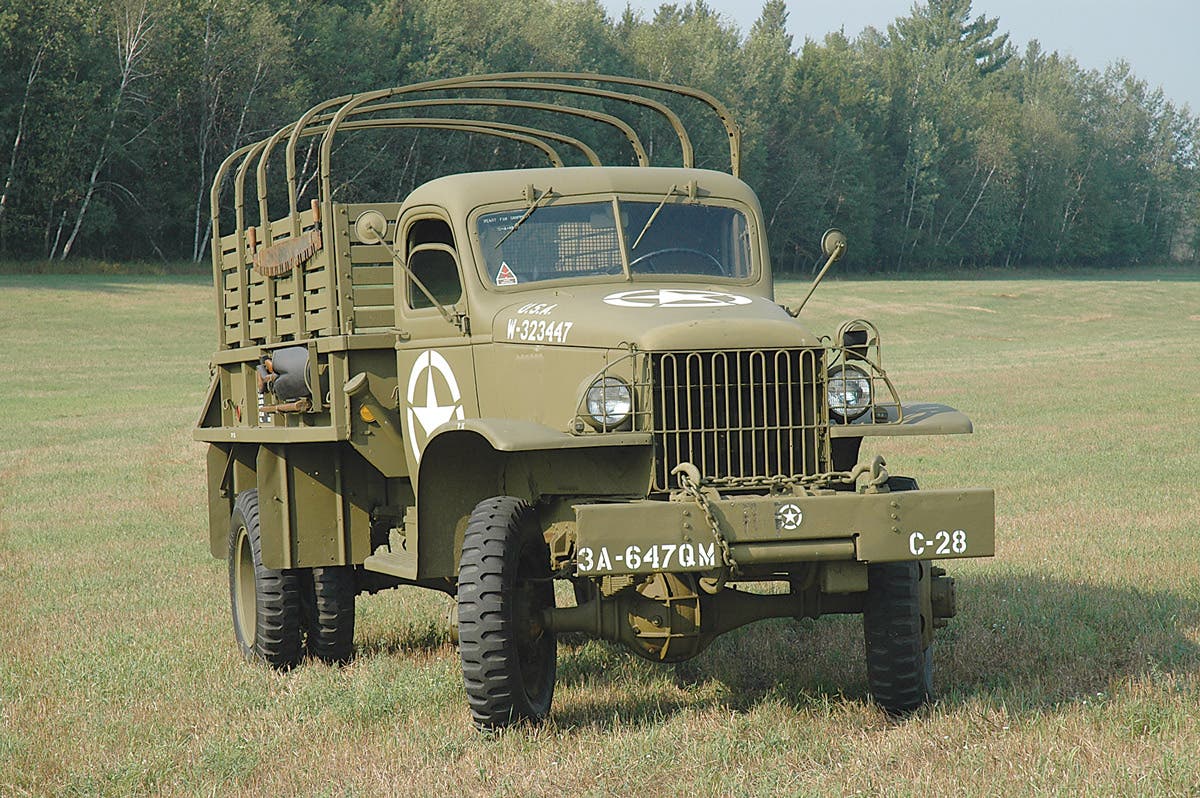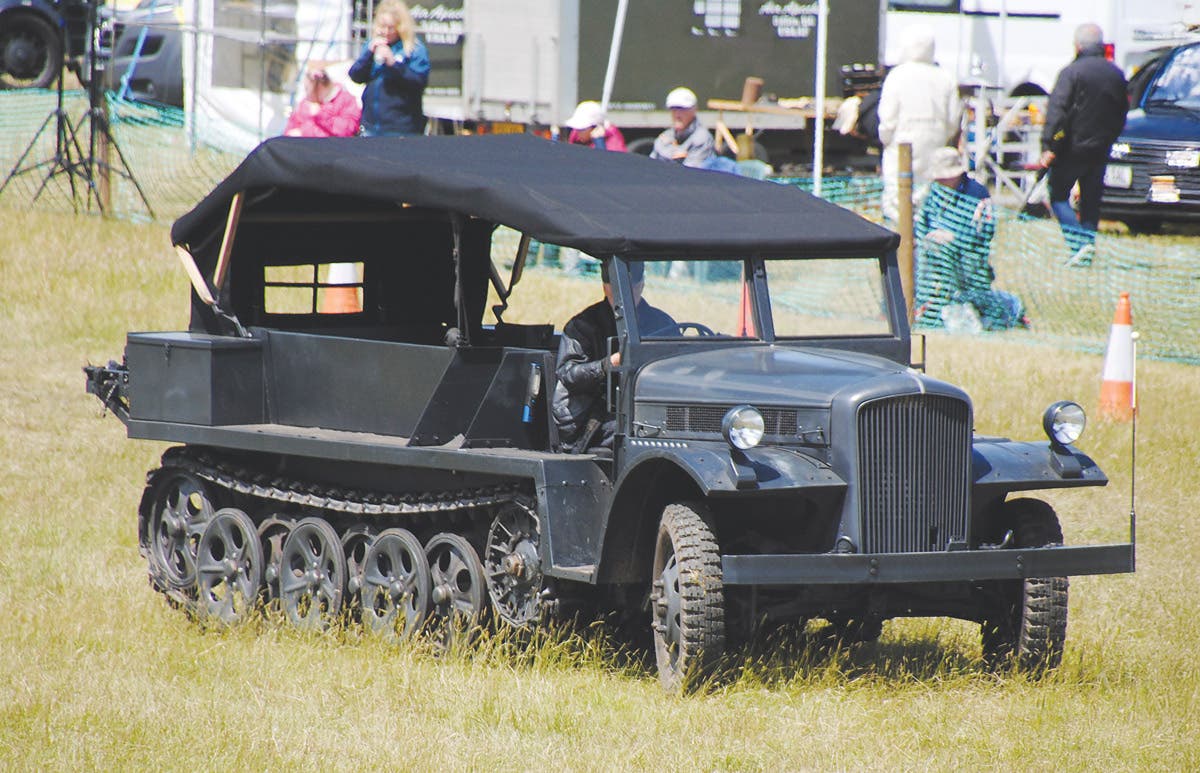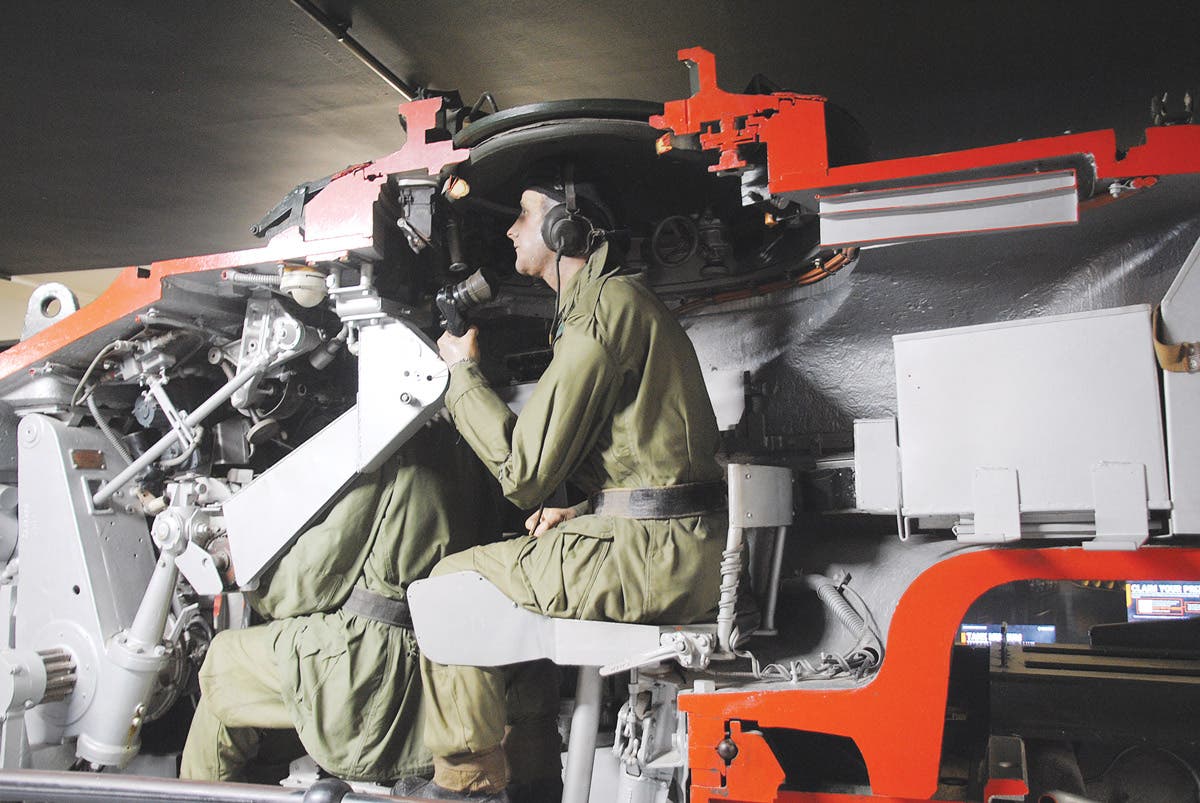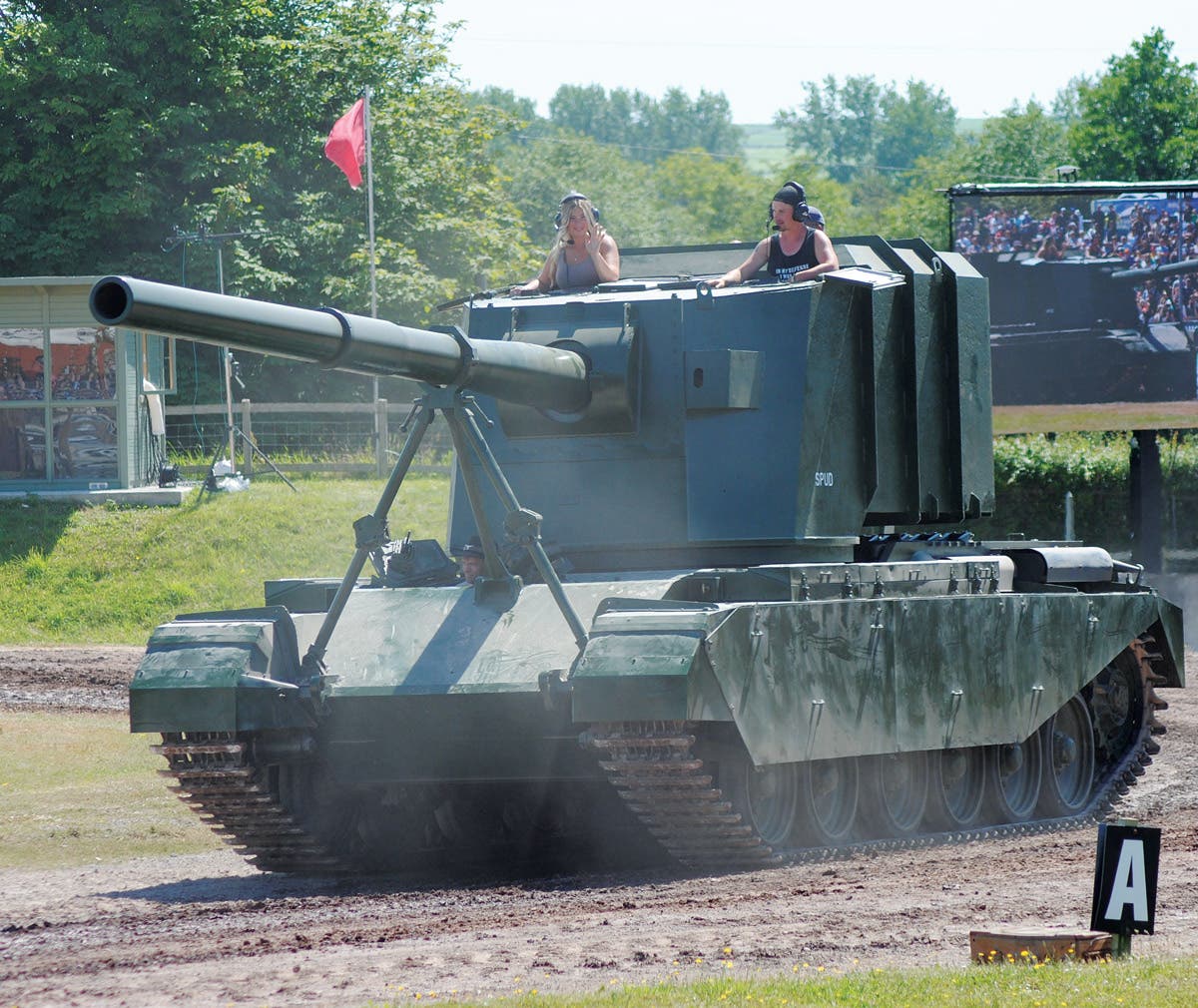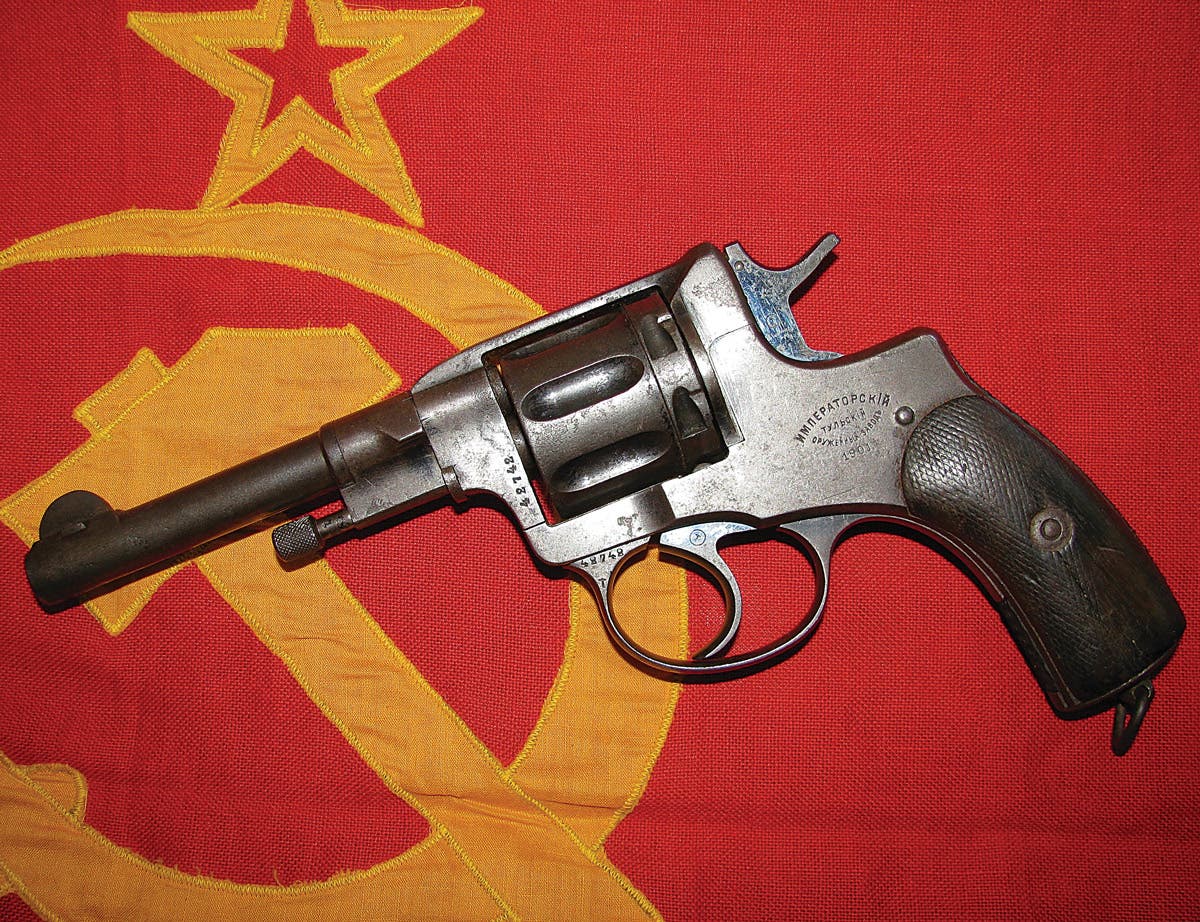2017—The Year of the “Deuce”
“We never called them a ‘deuce,’ damnit!” my boss, Chet Krause, once bellowed at me. “They were just ‘trucks’ or ‘jimmies.’” I had made a neophyte error by referring to…
“We never called them a ‘deuce,’ damnit!” my boss, Chet Krause, once bellowed at me. “They were just ‘trucks’ or ‘jimmies.'” I had made a neophyte error by referring to one of his restored, WWII two-and-a-half ton trucks as a “deuce-and-a-half.” And because I stepped on the metaphorical toes of the entire WWII generation, it was a lesson I never forgot.
DIFFERENT TIMES
Chet and I grew up in different times, and as a result, the words that we learned to describe items sometimes clashed. Chet was a WWII veteran who occasionally resented modern day collectors’ attempts to classify objects. For example, I once heard him frustratingly ask a reenactor, “Bails? Bails on my helmet? What the hell are you talking about?” Clearly, Chet didn’t care if the chinstrap on his steel pot had fixed or swivel loops (collectors often refer to these as “bails”).
To him, it was a helmet he wore to protect his head during combat—nothing more, nothing less. But to the young reenactor, the helmet represented something totally different: A mark of distinction that could be further enhanced if he was able to break it down into quantifiable elements: Seam location, swivel type, paint texture, or manufacturer. What was seemingly lost to the reenactor was that, to the WWII soldier, it was just a “helmet”—usually an inconvenience, but sometimes a protector. Nothing more. Nothing less.
So, when it was my turn to receive one of Chet’s verbal volleys, I was a bit more prepared for the rebuke than the reenactor. Rather than feeling the full effect of Chet’s blast, I just listened as he explained how he never heard anyone (during WWII) use the expression “deuce-and-a-half” or “deuce” to describe the 2-1/2-ton trucks that were so prevalent in the Allies’ motor pools.
I was born forty or so years after Chet, though. This means, I grew up during the Vietnam War. As a little kid who would show up in the camp of National Guardsmen when they bivouacked in our small county fairgrounds when convoying past my Minnesota hometown, the only term I remember soldiers using to refer to their big trucks was “deuce.” Different times: Different words.
ORIGIN OF THE “DEUCE”
With no disrespect intended to the founder of Krause Publications and the one-time owner of Military Vehicles Magazine, we have decided to declare 2017 the “Year of the Deuce.” Why? Well, 2017 will actually be the 85th anniversary since the first production 2-1/2-ton trucks were received by the U.S. Army as part of the post-WWI Standardized Fleet.
The Army’s effort to create a new fleet of rolling stock after WWI resulted from state governments's demands for the government to release surplus trucks at bargain prices. Congress gave in, and what had been the Army's reservoir of nearly 120,000 vehicles in 1919, was decimated to less than 30,000 just two years later as trucks were sold to civilians.
Furthermore, those vehicles that remained in military service were wearing out quickly. Army planners recognized that the existing fleet of 4x2 “Liberty Trucks,” though sufficient for driving the the roads of France and Germany, were woefully ill-equipped for any cross-country activity.
In the early 1920s, the Quartermaster Depot at Fort Holabird, Maryland, began experimenting with truck. Arthur Herrington, a member of the team working on the project suggested that the Army didn’t need to contract existing truck companies to build a cross-country capable fleet. Rather, Herrington demonstrated how the Army could assemble its own trucks from components it purchased separately. By approaching the problem from this perspective, he reasoned, the Army could build trucks that met its needs, rather than being compelled to adapt existing commercial trucks.
Out of this initiative, Fort Holabird automotive engineers began work on a series of prototypes for a truck fleet that would range from 1-1/4-ton 4x4s to 12-ton 6x6s. Somewhere in the middle of this range were the grand-daddies of what I—and an entire generation—would refer to as “deuce-and-a-half” trucks.
COMMERCIAL PRODUCTION
The Army producing its own trucks didn’t go over well with a lot of American manufacturers. Fort Holabird’s “Standard Fleet” numbered only 60 trucks when Congress began reacting to the pressure from the civilian sector. It didn’t take long for Congress to stop the development or any further production of trucks by the military.
Though the effort to create a standard fleet may have fizzled, commercial manufacturers quickly began to offer a wide range of all-wheel-drive trucks to the military. FWD and Oshkosh offered some excellent—but expensive—choices. By 1933, Clydesdale, Hug, Corbitt, Indiana, and Biederman put forth their own candidates for military service. Marmon-Herrington, Mack, Reo, and Federal soon followed with trucks on the heavier end of the Army’s requirements.
Dodge and GMC were the first two companies to offer medium range all-wheel-drive trucks. Chevrolet, Ford, International, Studebaker, Reo, Diamond T, and Federal soon followed with their own designs. Out of these efforts, the ACKWX and finally, the ubiquitous CCKW 6x6 trucks emerged, with GMC becoming the primary contractor for 2-1/2-ton trucks during WWII (Studebaker, Chevrolet, International, and Reo would also supply trucks in this range). To a generation of WWII veterans, these 6x6 trucks would be affectionately referred to as “Jimmies.”
"JIMMY" OR "DEUCE?"
So, if it wasn’t from the millions of soldiers who rode in 2-1/2 ton trucks during WWI, from where did the term “deuce” arise? Well, it probably has its origins in Congress’ efforts to limit the amount of advertising manufacturers could display on their products supplied to the military. Early in 1942, advertising branding was apparent as Jeeps passed by with “Willys” or “Ford” emblazoned on the rear panels, 1-1/2-ton trucks with “CHEVROLET” on the side panels rolled down the highways, and 2-1/2-ton trucks lined up in motor pools with “GMC” badges on the grilles. By the end of WWII, all of this branding had disappeared from motor vehicles. As a result, it probably became less likely for a mechanic to refer to his 6x6 as “Jimmy” when there wasn’t the prevalent reminder of a “GMC” plaque in front of him when he opened hood.
By the conclusion of the Korean War, the old, WWII veteran GMC 2-1/2-ton trucks were coming to the end of their days in service. New M135 and M211 trucks--eomplete with an automatic transmission--were still rated as 2-1/2-ton trucks, but the profile was much different than the beloved WWII-era Jimmies. Except for the data plate, the “GMC” logo or moniker was just not that obvious. Young soldiers had no reason to use the name “Jimmy” to refer to their trucks.
When the M35 entered service a few years later, the manufacturer of the truck did not matter to the soldiers as much as its function. While “Eager Beaver” was applied to some of the trucks, it didn’t catch on like “Jimmy” had, twenty years earlier. It is probably at this time when soldiers began to personalize the military nomenclature from “Truck, 2-1/2-ton” into something a little less stiff: “Deuce-and-a-half,” or even more familiarly, “Deuce.”
Regardless of one’s perspective or preferred term of endearment, it is undeniable, that from 1940 until the end of the twentieth century, the 2-1/2-ton truck was an iconic mainstay of U.S. military service. It would have been nearly impossible for a Soldier, Marine, Sailor, Airman or any other service member during those 60 or so years to have not seen, driven, or ridden in one of these trucks.
So, to acknowledge the truck's universal appeal and the 85th anniversary of its inception, the staff of Military Vehicles Magazine and Military Trader proudly proclaim the year of 2017 to be “The Year of the Deuce.”
Keep ‘em rolling,
John Adams-Graf, editor
Military Vehicles Magazine and Military Trader
John Adams-Graf ("JAG" to most) is the editor of Military Trader and Military Vehicles Magazine. He has been a military collector for his entire life. The son of a WWII veteran, his writings carry many lessons from the Greatest Generation. JAG has authored several books, including multiple editions of Warman's WWII Collectibles, Civil War Collectibles, and the Standard Catalog of Civil War Firearms. He is a passionate shooter, wood-splitter, kayaker, and WWI AEF Tank Corps collector.



